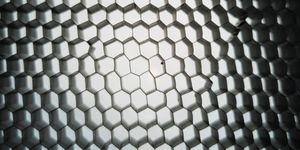A Programmable, Electromechanical Wound Dressing
Imagine a bandage that doesn’t just cover your wound but actively works to heal it.
Researchers at the University of Electronic Science and Technology of China have created a flexible, programmable patch that uses electrical stimulation to create the optimal environment for wound healing. The study, published at the end of January 2022 in Science Advances, was led by Yuan Lin and is paving the way for similar innovations in wound treatment.
Skin abrasions and surface wounds are common problems in public health worldwide. The World Health Organization reports that over 305 million people globally are affected by chronic wound problems. More than $25 billion annually is spent on wound management in the United States alone. Pharmaceutical companies have created solutions for improved wound management and healing, but drugs are not a cure-all and sometimes have adverse side effects.
Non-pharmaceutical technologies are gaining ground in the industry, with mechanical electrostimulation and ultrasound treatments approved by the U.S. Food and Drug Administration. These innovations can regulate the microenvironment of a wound by controlling gene expression, cell behavior, cell differentiation, and tissue regeneration but are generally administered using large equipotent. Doctors need physically smaller solutions if they are to distribute these technologies widely.
The research team’s new bandage takes all the principles of mechanical and electrochemical wound management and packages it into a small, programmable patch. The patch is made of four layers: the top and bottom layers transfer the electrical signals to the skin, and the two middle layers adapt to the shape of the skin and hold the wound closed tightly. Altogether, the patch is 0.2 mm thick.
Scientists tested their patches on rat models. Researchers made either linear or circular incisions on rats and covered the wounds with their patches or other dressings, including commercially available dressings and one group with no covering at all. They monitored the healing process of the wounds during each stage of wound healing: inflammation, tissue formation, and modeling.
The team observed that rats with their patch healed 50% faster than undressed wounds, with linear wounds healing in four days and circular wounds in eight. Circular wounds take the longest time to heal out of the other abrasion types, and they found that circular wounds were over 95% healed after eight days with their group’s patch, compared to 80% of circular wounds healed using other dressings.
Another exciting feature of this patch is that it is battery-free. Researchers proved that electromechanical systems are effective in wound therapy and will continue to hone their device, so it’s able to treat a broader range of abrasions. The success of their study implies a future of customizable bandages for a more effective and less painful healing process.
Source: Science Advances









